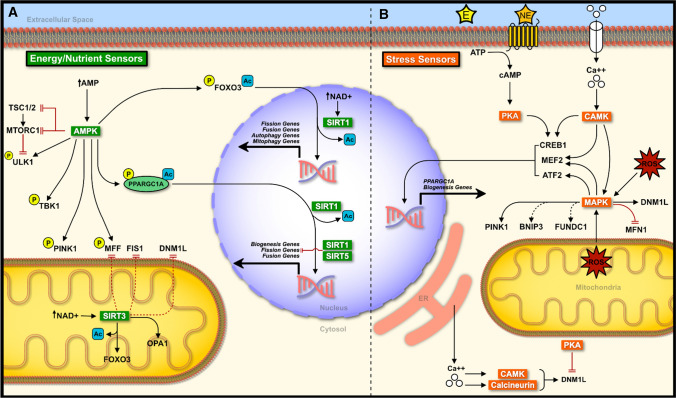Fig. 5.
Interplay between mitochondrial biogenesis, dynamics, and mitophagy. a Under low energy conditions, AMPK phosphorylates multiple targets to promote the turnover of mitochondria through the promotion of mitochondrial biogenesis, fission, and subsequent mitophagy. Low energy conditions can also stimulate the activity of SIRTs resulting in the deacetylation of target proteins and transcription factors. SIRTs promote biogenesis, and mitophagy, while inhibiting fission events. Together AMPK and SIRTs provide a fine-tuned response under low energy conditions. b A number of stress sensors work together to promote mitochondrial homeostasis. PKA, CAMK, calcineurin, and MAPK all promote biogenesis and mitophagy. CAMK, calcineurin, and MAPK also promote fission whereas PKA inhibits fission through the modulation of DNM1L function. Thus, these stress sensors display a similar fine-tuned response to that of AMPK-SIRT. Solid black lines indicate direct activation. Solid red lines indicate direct inhibition. Dotted lines indicate indirect activation (black) or inhibition (red). E epinephrine, NE norepinephrine

